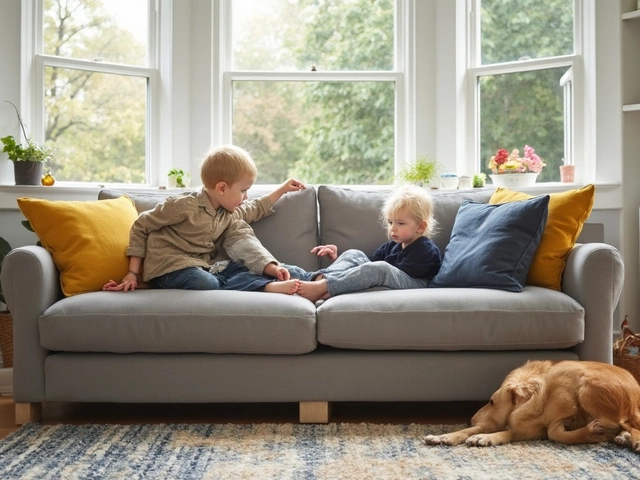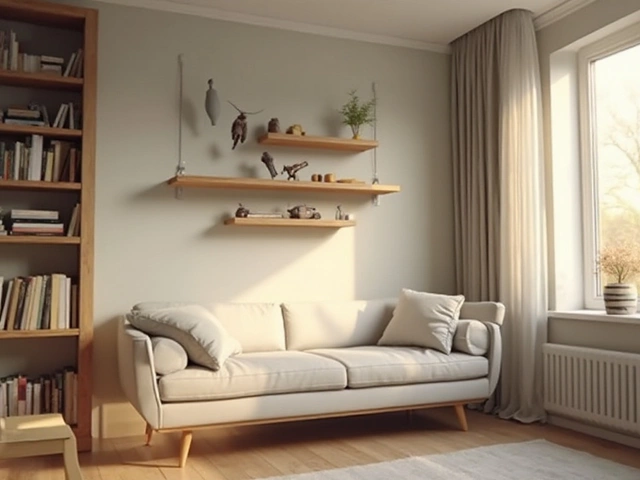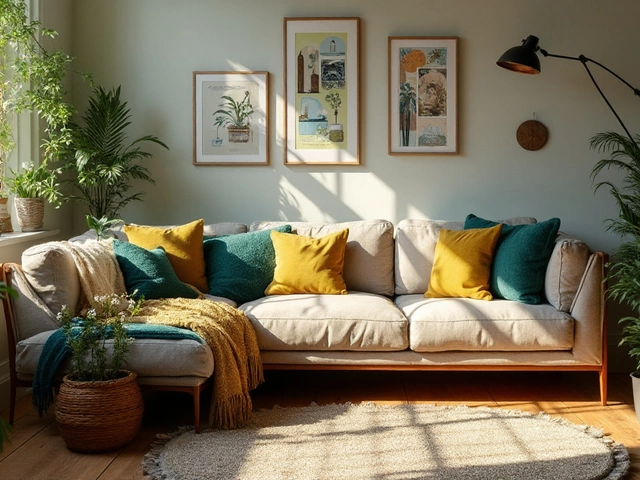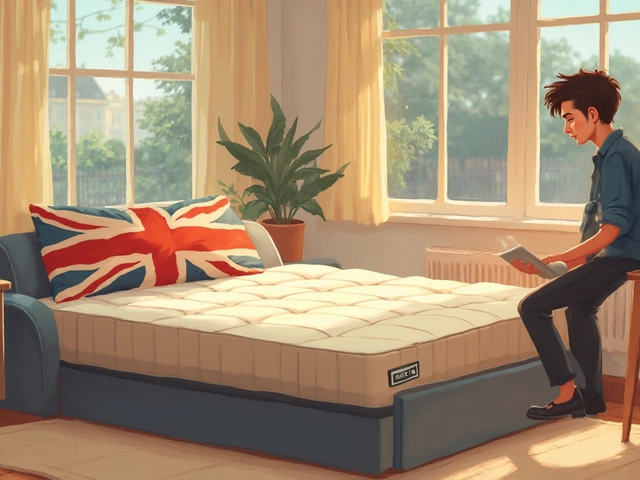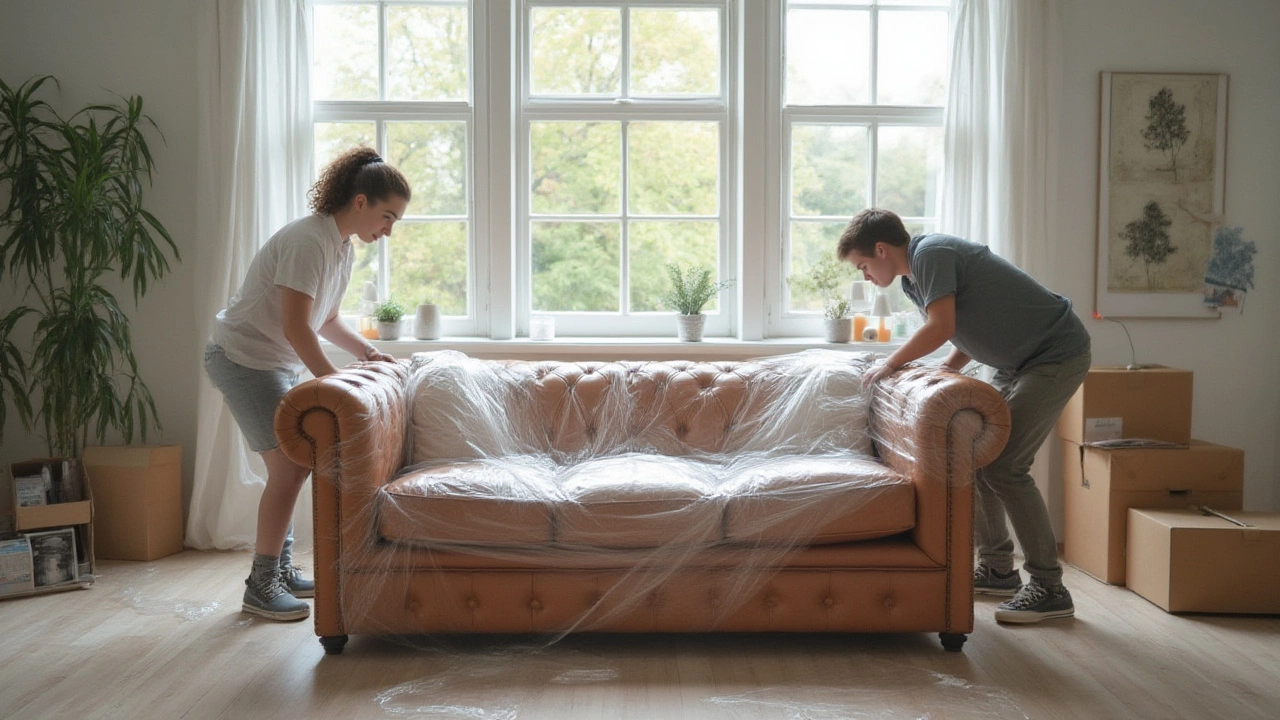 11
Jul,2025
11
Jul,2025
Imagine spending weeks carefully picking out the perfect sofa, only to find it warped, sticky, or covered in mildew after a stint in storage. Makes your skin crawl, right? So much talk floats around about moving and storing furniture, yet folks still get tripped up by the big question: should you wrap your stuff in plastic, or will it ruin your favorite couch?
Why People Wrap Furniture in Plastic—and What Goes Wrong
When you’re hauling your precious stuff to a storage unit, wrapping furniture in plastic seems like a no-brainer. Most moving companies and big box stores push heavy-duty plastic as the go-to, mainly because it’s fast, cheap, and secure. Thinking about dust, spills, or one clumsy friend dropping your mattress in a puddle? Plastic wrap feels like full-body armor for your investment. It stretches tight, locks out water, and gives you the sense that, no matter what, your stuff’s protected.
Here’s the catch: that tight barrier can turn on you. Picking the wrong kind of plastic—or using too much—traps moisture. Ever open up a bin after a month only to get walloped by a damp, musty punch in the nose? That’s water vapor and bacteria, turning your asset into a steamy hotel for mold and mildew. Wood swells. Leather sweats and feels sticky. Fabric, instead of coming out fresh, reeks and might even be spotted with mildew. It's like a science experiment gone wrong, and you don’t want your favorite dresser as the main test subject.
Mistakes happen in both directions—people either don’t wrap enough, so there’s zero protection, or wrap so tight their table can’t ‘breathe.’ Some folks even skip cleaning before wrapping, locking crumbs and dust inside where bugs or mold can go wild. Physical damage is another risk. When plastic is yanked too tightly, corners can splinter, couch frames can bow, and painted surfaces might peel off with the wrap. No one brags about their new ‘plastic wrap marks’ design trend.
So if you care about your stuff, you need a plan that goes beyond a roll of plastic and wishful thinking.
The Weird Science of Storing Furniture: What Actually Happens Under Plastic
Let’s crack open the science for a sec. Furniture breathes—wood, fibers, leather, even foam draw in and push out moisture. Slam a plastic seal around that, and you mess with the whole balance. In places where humidity swings (think July in Houston or a drafty London flat), furniture tries to adapt. Wood expands and contracts, making that pop or creak you hear at night. Trap that action under plastic, and it can’t release moisture. Water collects, and boom—mold city.
Leather’s another story. Lock it up under plastic, and heat builds. Leather’s natural oils can’t escape. You might notice sticky arms or weird patches where condensation formed and then dried. Some people try punching little air holes in the plastic, but it doesn’t help much. Mold and bacteria need only a whiff of water and a bit of warmth to set up shop. Once inside, your best hope is a professional cleaning, which costs more than just wrapping things the right way upfront.
Got painted wood or stained finishes? These can sweat under plastic as well, leading to streaking, faded patches, and worst of all, peeling. For things that matter, like a family heirloom table or a statement armchair, hasty wrapping is like rolling the dice. In fact, the Smithsonian Conservation Institute has shown that improper plastic wrapping is one of the top causes of chemical and water damage for antique and hardwood furniture in off-site storage.
Now, on the other side, there is a good reason to use plastic. During a quick move or when short-term protection is more important than long-term risks (say, a day or two in a moving truck), plastic shines. It blocks rain, keeps off dirt, and stops your buddy’s pizza from dripping onto your armchair. The trick is to keep that wrapping period as short as possible—or use it as just one layer in a smarter system.
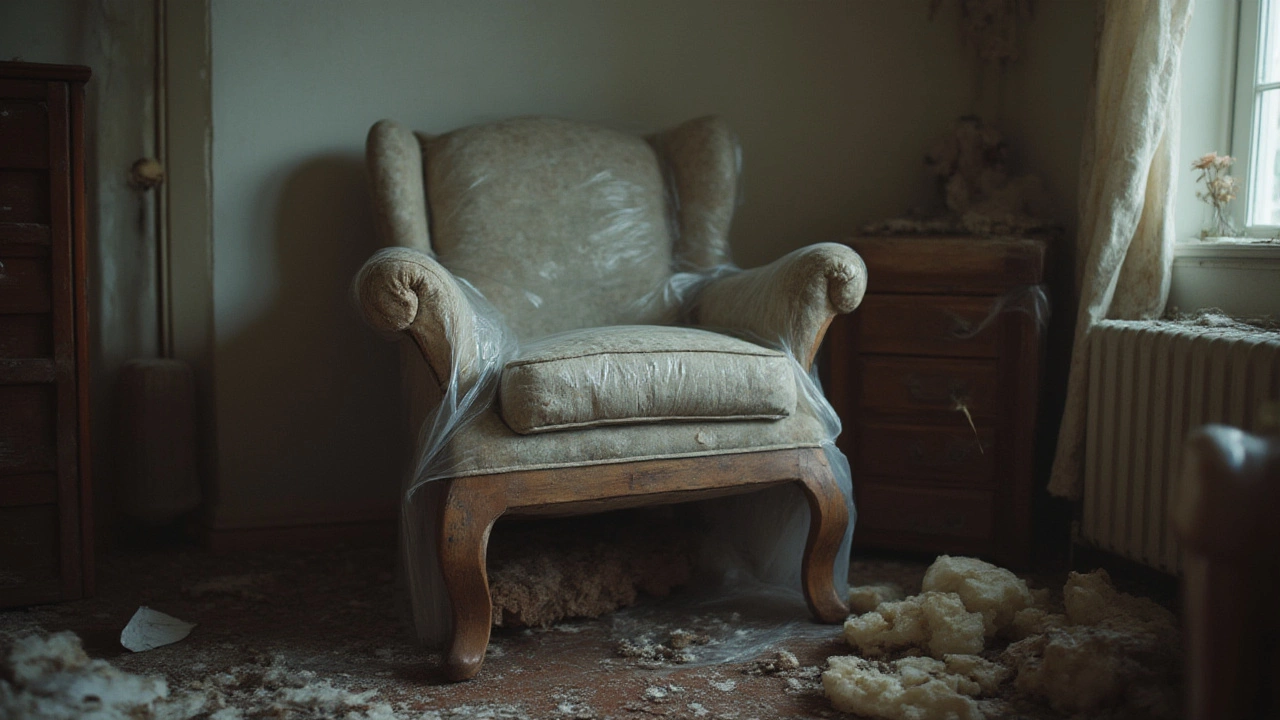
When Plastic Wrapping Makes Sense—and When to Skip It
Using plastic for storage isn’t always a villain move. In fact, sometimes it’s the hero if you know the rules. The main thing to remember: duration and environment matter. If you’re taking your sofa across town with rain in the forecast, get that plastic on there. Quick trips, unpredictable weather, open-bed trucks? Wrap it and thank yourself later.
But planning to stash your things away for a month, season, or even longer? That’s when things get tricky. Putting furniture wrapped in tight plastic in a non-climate-controlled storage unit all summer is about the fastest way to invite damp, mildew, and heat damage. Even those shiny climate-controlled units aren’t foolproof; power outages or tiny leaks can still raise humidity. Without airflow, plastics create the perfect microclimate for mold.
Another smart time for plastic? When prepping furniture for sandstorms, construction zones, or heavy-duty pest concerns. Just make sure you’re not locking anything damp under that shield, and when you get where you’re going, peel it off quickly. It’s also worth considering perforated plastic or specially-designed storage wraps that let air flow while still guarding from spills and dust. These are pricier but can save your furniture and sanity.
If your storage time stretches beyond a week, look for alternatives: padded covers, cotton sheets, moving blankets, or breathable fabric wraps. Use plastic only over these—for quick spill protection, not as the first and only layer. Your stuff needs to exhale. If you must use plastic for longer, crack it open once in a while. Let your furniture see the light—or at least the air.
Smart Steps for Wrapping Furniture without Regretting It Later
Nobody enjoys unpacking a soggy chair or musty-smelling dresser, so a little prep goes a long way. Here’s how to get the protection, but dodge the problems:
- Clean thoroughly: Wipe down wood, vacuum fabric, and treat leather with conditioner. Any dirt or crumbs left behind can turn into mold magnets or attract insects while stored.
- Dry, dry, dry: Before anything gets wrapped, triple check it’s bone dry. Even a hint of dampness turned airtight spells trouble.
- Keep it loose: If plastic must be used, loosely drape it; don’t shrink-wrap. Air should be able to move around. Gaps beat a tight seal.
- Layer it up: Use moving blankets, furniture pads, or clean cotton sheets against the furniture, then plastic as the outermost layer. This absorbs excess moisture and prevents plastic-on-finish sticking.
- Don’t forget silica gel: Those little packets you find in new purses or shoes? Toss a few in with each wrapped item—they’ll suck up stray moisture.
- Lift off the ground: Furniture legs and frames can absorb floor-level moisture, especially in garages or storage units. Slip cardboard, wood blocks, or plastic risers underneath.
- Leave space: Pack items a little apart so air can drift between them. A jam-packed stack means no airflow, which spells disaster for anything wrapped.
- Quick trips only: If you can, pull plastic off within a week. Unwrap, check, and re-wrap as needed to dodge buildup.
If you follow this game plan, you’ll cut the risk of warping and mildew way down. And don’t skip the step where you check on things halfway through storage—even five minutes with the unit door open once a month helps air everything out.

Better Wrapping Alternatives and Foolproof Storage Tips
If hearing all the plastic horror stories has you nervous, good. That means you care about your stuff. Luckily, tons of proven alternatives and smart tips exist for anyone serious about keeping furniture in top shape.
Start by picking the right storage unit. Climate control might cost more up front, but it can be the difference between a salvageable couch and a soggy mess. Look for spots with stable temps, good airflow, and low humidity (below 55% is ideal). Units with raised floors or in well-built buildings beat those metal lockers in an alley every time.
Padded covers work wonders. You can buy quilted furniture blankets, borrow moving company pads, or even use heavy cotton towels if you’re on a budget. These allow moisture to escape, give a cushioning barrier for moving bumps, and won’t stick or leave marks. Old bedsheets, comforters, and even duvet covers can do the trick for awkward-shaped pieces.
For delicate or high-value finishes, opt for acid-free paper or foam wrap under the outer layer. This is what museums use for artifacts and old books. Then, if you want to block dust, put plastic loosely over the top—never in direct contact. Some modern companies now make ‘breathable storage bags’ that zip shut but wick moisture, which is a real upgrade from plain plastic.
Label each piece if it’ll stay wrapped for a long time. Peeling back plastic just to see what’s inside is no fun. For complex setups—like a dining set that’s been disassembled—attach hardware in small bags to each piece, and snap a picture of the assembly order before packing up. The easier you make opening and checking stuff, the better protected it’ll be.
And here’s a little-known trick: toss in a few bars of unused soap or cedar blocks with your stacked furniture. Cedar keeps bugs out, while regular soap acts as a mild, pleasant-smelling moisture absorber. Avoid those heavy air fresheners or chemical scents—they can stain furniture with extended contact.
The golden rule? Whenever doubt creeps in, less plastic means fewer headaches later. Go breathable, add layers, and check up on your items. Smart prep now beats an expensive replacement later, every time.
